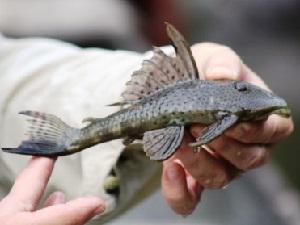Matthew A. Kolmann
We will investigate the coastal and estuarine fishes of the Demerara River, using commercial and artisanal fishing vessels crewed by local fishermen. The goal of our proposal is to survey the fish species caught in the Demerara River and produce a guide to the identification of these species; train local students to collect meaningful fish catch data from markets and fishermen, and promote sustainable harvest management practices.

The specific goals of this research are to:
/fcde2e278ebc11f607bb0329c192371b.JPG)
(A) identify fish species caught by fishermen, as well as some species not targeted by the fishery,
/7f651315a90a8bd8fa6209fa3177b7cf.JPG)
(B) determine how the catches of these species are coincident with varying water and weather conditions (as listed above),
(C) produce materials to aid in proper identification of most important species.
The overall aim of this study is to:
(1) catalogue the diversity of estuarine fishes in the Demerara
(2) comparison with other regions of northern South America, such as Suriname, French Guiana and Venezuela.
Guyana displays considerable inland, freshwater biodiversity but the coastal and estuarine fish communities are almost entirely unknown and largely assumed to be overwhelmingly similar to neighbouring countries. We will be recruiting aid from University of Guyana students for assistance with our surveys. These students will gain valuable expertise on scientific sampling, animal-handling, and analysis of fisheries catch data. We hope that this will provide the qualified staff recommended for the DFO by the FAO (2005). We request funding for contracting local fishermen for use of their time, fuel, and vessel during our sampling trips. In this way we are compensating local fishermen for their time and expertise and by accompanying them on their daily routines. We hope to encourage cooperation between scientists, managers, and stakeholders as well as increasing transparency and building collaborative networks. Personally, we hope to identify, collect tissues (for DNA barcoding), and catalogue specimens so to document the entire fish species diversity of the coastal plain, which has been sorely missing from any assessment of local biodiversity.